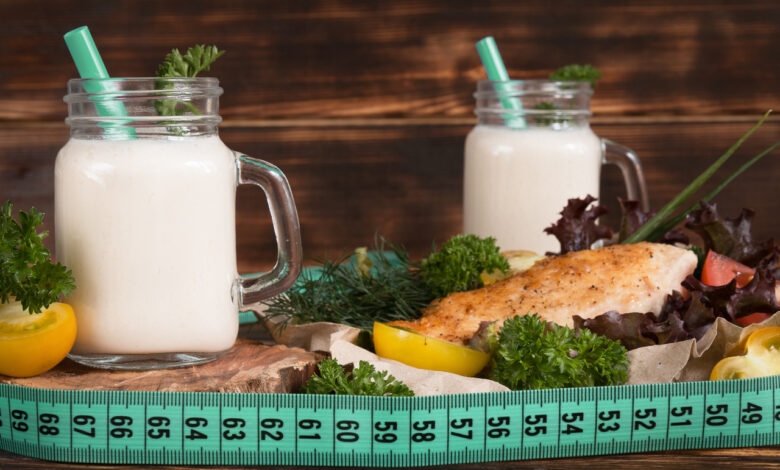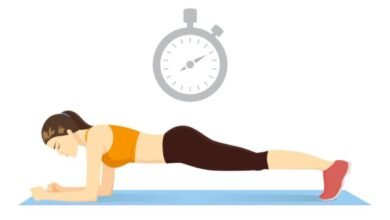Protein for Weight Loss – What You Need to Know for Success

Protein is an essential macronutrient that is involved in a variety of body functions. It is the building block of our body. They involve multiple functions like carrying cellular processes, transporting various substances to various body parts, and physical movements.
They are also involved in protein hormone synthesis. It is thus very crucial to regularly incorporate protein into the diet. However, there are a number of doubts that shroud protein consumption.
There are questions about how much protein one should consume in order to reach their target weight, what type of protein is best suited for different groups and who should not be consuming any. However, the mother of all these queries is whether protein assists in weight loss or it facilitates weight gain.
This article addresses the relationship between protein consumption and weight loss. But before we begin, we’ll take a few steps back to better understand this macronutrient.
Types of Protein
There are 20 different types of amino acids which combine to give protein. Some amino acids are classified as “essential” and must be obtained from food, while others are classified as “non-essential”, and your body can produce them.
Getting adequate protein daily is essential for optimal health, growth, development, and function at every age and stage. It is vital to understand where you can get your protein intake.
There are many different protein sources, which can get confusing, especially if you have any dietary restrictions or allergies. The main idea is to know where you can get the optimum amount of protein without compromising on other factors.
How Yashika Lost 17 kg and Upped Her Muscle Mass in Just a Year | A HealthifyMe Transformation Story
Chat with us to get started on your health and fitness journey >> https://hlfy.me/YT_Video
Protein sources can broadly be classified as
Animal-Based Proteins
These come from animal products, mainly dairy-based products such as milk and yoghurt, and animal meat such as chicken, mutton, pork, lamb etc. These are considered as complete proteins primarily because they contain all nine essential amino acids that one needs to function.
Plant-Based Protein
These proteins get derived from plants, from peas and soy to chickpeas and brown rice. Unfortunately, these are incomplete proteins because they typically lack at least one critical amino acid your body requires.
Ways to Use Protein for Weight Loss
According to studies, the recommended dietary allowance, (RDA) for a healthy adult with minimal physical activity, is 0.8 grams per kg body weight per day.
So, for a person weighing 60 kg, a minimum of 60 grams of protein should be ideal. However, this also depends on other factors like your height, weight, medical background, activity levels and health goals. For example, older people, more active people, and those who are pregnant or breastfeeding require more protein.
To complement your weight loss journey, increase your protein intake to around 1.6-2.2 grams per kilogram of body weight. You can also calculate it by keeping protein around 25-30% of your daily caloric intake. It will help you balance the amount of protein you consume while ensuring your intake is not too high.
As aforementioned, protein is one of the basic elements for leading a healthy life. Proteins are also responsible for the synthesis of enzymes and various hormones. True deficiency is uncommon in urban areas, although a low intake can lead to muscular atrophy and an increased risk of fractures. A severe protein deficiency can hinder children’s growth, contribute to fatty liver and skin, induce oedema, and worsen infections. Kwashiorkor and marasmus are two major protein deficiency diseases.
On the flip side, consuming excess proteins will lead to fat accumulation in your body, leading to unhealthy weight gain. It can also lead to bad breath, constipation, dehydration, and diarrhoea. A high protein diet, when consumed for long periods, can lead to calcium homeostasis and bone disorders, renal function disorder, enhanced cancer risk, liver function disorder, and enhanced coronary artery disease.
Thus, it’s important to consume protein in regulated amounts as recommended by a certified nutritionist. There are various chemicals in our bodies that influence our nutrient requirements.
The metabolic tests check the level of different substances in the body and denote the overall health status. An abnormal level of any substance is an indication of an underlying health condition.
The test results can be further used for screening, diagnosis, treatment and monitoring of diseases and general health evaluation. The latest comprehensive metabolic panel devised with the new HealthifyPro will help you get a broad medical screening to better understand your health and monitor your bodily functions from time to time.
You can also track your food through the calorie tracker, learn all about your body with the data from the Smart Scale and CGM, and get actionable tips from pro coaches to reach your health and fitness goals with HealthifyPro. The power of Pro allows you to understand your lifestyle and make changes real-time. To know more, check out HealthifyPro!
Benefits Of Protein For Weightloss
1. Keeps You Satiated For Longer
According to studies, protein is the most filling macronutrient. The macronutrient tends to reduce the ghrelin (hunger hormone) levels in the body while boosting levels of the peptide YY, which further helps an individual feel full.
It reduces your portion size and keeps you satiated for longer periods of time. The urge to snack and binge on unhealthy food items also reduces after a protein-rich diet.
If you’re looking to lose weight, try replacing some of the carbs and fats in your diet with protein. You can simply add a few extra bites of meat while making your rice serving smaller.
2. Preserves Lean Mass
Protein is considered the building block of muscles. Consuming adequate amounts of it helps maintain muscle mass and promotes its growth while doing strength training. If you’re physically active or trying to gain muscle, ensure you’re consuming sufficient protein. High intake can also help prevent the loss of muscle during weight loss.
3. Increases Metabolic Rate
Food consumption temporarily boosts the body’s metabolism because the body uses calories to digest and use the nutrients in the food. This is referred to as the thermic effect of food. Since it has a much higher thermic effect than fats or carbs (20-35% as compared to 5-15%), protein intake will significantly boost the body’s metabolism.
Studies say that protein digestion enhances metabolism by 20–35 per cent, compared to 5–15 per cent for carbohydrate or fat digestion. In addition, it has been observed that those who consume high-protein diets burn more calories for several hours afterwards.
4. Enhanced Immunity and Energy Levels
The body protects itself from various diseases with the help of antibodies. These antibodies are specific protein types with the ability to detect foreign elements or antigens. The body produces antibodies in order to deactivate antigens.
Protein also serves as a natural source of energy. Failure to consume a diet that would provide adequate energy to the body, as is the case during fasting or weight loss programs, would cause the body to use its own functional protein to compensate. Since there is no extra protein in the body, enzymes and muscles break down protein in order to yield amino acids to provide energy or synthesize glucose. This would ensure a continuous supply of glucose to the cells.
Stronger immunity and energy levels help one stay undeterred on the path to losing weight.
Quick Protein Rich Healthy Recipes for Weight Loss
Baked Soya Chunks
Serving Size: 2-3
Preparation time: 20 minutes
Ingredients
- Soya chunks- 1 cup
- Salt- just a pinch
- Olive oil- 1 tbsp
- Red chilli powder- 1 tsp
Method
- Wash the soya chunks.
- Boil it for a few minutes with a pinch of salt.
- Squeeze out the water with your hands.
- Please put it in another bowl and toss it with salt, red chilli powder, and olive oil.
- Preheat the oven to 180 degrees for 6-8 minutes.
- Bake the soya chunks for 10 minutes on both sides at 180 degrees.
- Serve it warm.
Microwave Mug Egg
- Serving Size: 1
- Preparation time: 5 minutes
Ingredients
- Soya flour/quinoa flour/oats flour- 5 tbsp
- Baking powder- ¼ tsp
- Baking soda- ⅛ tsp
- Low-fat Milk- 2 tbsp
- Melted butter- 1 tsp
- Egg- 1
- Salt- just a pinch
Method
- Mix flour, salt, baking soda and powder in a microwave-safe mug and mix it with a fork.
- Add milk and butter, and mix until combined.
- Make a well in the centre of the batter with a spoon and crack your eggs into the centre. Then, over the egg, spoon the batter from the edges.
- Cook for 50 seconds to 2 minutes in the microwave.
- Enjoy while warm.
Note: The cooking time may vary; therefore, keep a close eye on your mug while in the microwave so that it does not overflow or overcook.
Foods to Try
Lean Meats
Proteins are the most important nutrient for a bodybuilder during both muscle gain and fat loss phases. Lean meats provide the body with a significant amount of protein which will promote muscle growth and maintenance.
Turkey, chicken, lean beef, pork loin, salmon and cod are examples of lean meats that are high in protein and beneficial for health.
Milk
According to USDA 100 grams of milk contains 3.15 grams of protein.
According to research, milk is an effective post-resistance exercise beverage that results in favourable alterations in protein metabolism. It is to say that milk consumption increases muscle protein synthesis, which leads to an improved net muscle protein balance.
The research even states that when post-exercise milk consumption is combined with the resistance training of 12 weeks (minimum), muscle growth and lean mass development also increase.
It is advisable to avoid full-fat versions and opt for skimmed ones that have been fortified with vitamin D to utilise the best of the protein in milk. Furthermore, plant-based alternatives can be consumed in case an individual is lactose intolerant or vegan.
Among all the vegan milk options available, pea milk (8 grams protein/ cup) has the highest protein content followed by soy milk (7 grams protein/ cup).
Dairy milk contains high-quality protein and is also high in vitamins and minerals like vitamin B2, calcium, and phosphorus. Apart from being a rich source of protein, this milk is rich in calcium and ensures good bone health, strong teeth, a healthy immune system, and glowing skin.
Eggs
A majority of people know that eggs are a good source of protein. A diet that is high and rich in protein can aid in significant weight loss for overweight people. A single large egg contains about 6 grams of high-quality protein, making it an excellent choice for those looking to maintain their weight.
Including eggs in the diet improves daily protein intake, and nourishes and repairs the body while keeping you satiated for longer. Weight control is further supported when the person witnesses increased energy levels and higher metabolism with the right amount of protein in their diet.
Soy Beans
One of the biggest reasons why soybean is a celebrated food across the globe is that it can help you lose weight.
High protein content in soybean allows for the development of leaner muscle. And also, protein helps you stay fuller, preventing you from munching unhealthy snacks during odd hours. Further, it helps regulate insulin levels, thereby curbing obesity in a healthy manner. Several studies have found that soybean in recommended quantities can help induce anti-obesity effects.
Mixed Seeds
Seeds add crunch and quite a bit of protein to your meals. Having seeds like flaxseeds, sunflower, hemp, chia, pumpkin, poppy, sesame, garden cress, and melon increases your protein intake in an effortless manner.
It also helps with increasing your intake of micronutrients so you can add them to your soups, salads, porridge, cereals and even to halwa.
Apart from salads, you can also add them to raita, cereal, or homemade granola.
Brown Rice
According to USDA 100 grams of cooked long-grain brown rice contains 2.74 grams of protein.
Brown rice is a nutritious whole-grain option that will help you satisfy your body’s protein needs. It is one of the most popular high-protein grains and is used in various dishes, including Mexican and Asian cuisines given its versatility.
Brown rice provides more fibre than white rice since it is less processed. It has a lower calorie content and a lower glycemic index than white rice. As a result, it provides a good source of energy that is also mild on the stomach.
Summary
Keep one thing in mind as you navigate your weight loss journey. Up the protein, but keep it moderate.
Always remember to be flexible, pay attention to experts’ advice, and most importantly, your body. Finally, remember that weight loss can be fleeting, especially if you revert to your old eating habits. The best eating plan is one you can maintain over time.
External Sources
- Dietary Reference Intakes (DRIs): Recommended Dietary Allowances and Adequate Intakes, Total Water and Macronutrients: https://www.ncbi.nlm.nih.gov/books/NBK56068/table/summarytables.t4/?report=objectonly
- The effects of high protein diets on thermogenesis, satiety and weight loss: a critical review: https://pubmed.ncbi.nlm.nih.gov/15466943/
Frequently Asked Questions (FAQs)
Q. Can I lose weight on a protein diet?
Yes, people who eat a protein-rich diet are less likely to overeat, so they are more likely to lose weight. When combined with exercise, a high-protein diet can help you build lean muscle, combined with exercise. Weight loss is aided by lean muscle since it allows you to burn more calories throughout the day.
Q. How much protein is safe per day?
The general requirement suggested is 0.8 grams of protein per kg of body mass. Consume according to your age, gender, weight, and health status. In order to meet your 75 g of protein per day, it’s essential to first understand how much protein you are receiving from various sources:- Given below is a list for your reference:-
- 100 ml of milk – 3.15 g protein
- 1 cup of curds :- 4 – 5 g protein
- 1 cup of greek yoghurt: -8 -10 g protein
- 1 glass of buttermilk :- 3 – 4 g protein
- 1 katori cooked dal:- around 7 g protein
- 1 tbsp of peanut butter:- 4 g protein
- 100 g paneer:- 12 – 14 g protein
- 1 katori of chickpeas/ chole/ Rajma:- 14-15 g protein
- Thus, using the above measures and values, you can calculate the protein for the day (3 meals and 2 snacks) and make it up to 75 g in your preferred dishes and tastes.
Q. What is the best source of protein for vegetarians?
Chickpeas, Tofu and Green peas are the best source of protein for vegetarians. They are safe to consume on a daily basis and vegetarians can include them in their every day diet plan.
Q. Does protein reduce belly fat?
Protein can assist you in losing weight and maintaining it. It makes you feel more satiated and decreases the urge to snack. It may aid in the reduction of abdominal fat in particular. According to health experts, people who ate an extra serving or two of higher quality protein had much less belly fat. Furthermore, whey protein also helps people lose fat faster because it supplements more lean muscle throughout the body.
Q. Are protein powders gluten-free?
No, not all protein powders are gluten-free. Gluten is a protein in the cereals of wheat, barley, and rye. Hence, plant-based protein powders have gluten as a byproduct of the protein source. On the other hand, most protein powders made from dairy and animal protein may not contain gluten. Anyway, there is always a significant chance of cross-contamination, even in the case of dairy-based protein powders. Therefore, purchasing the one that specifically says ‘gluten-free’ is best.




